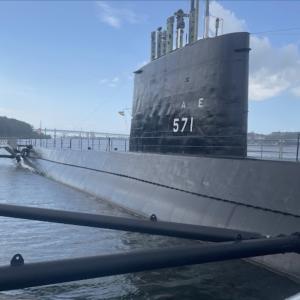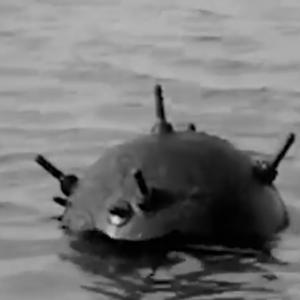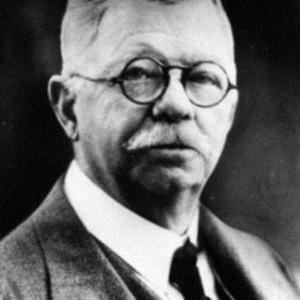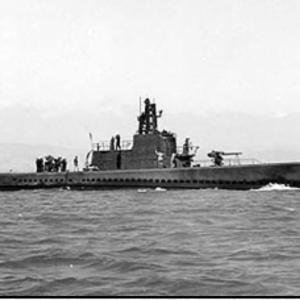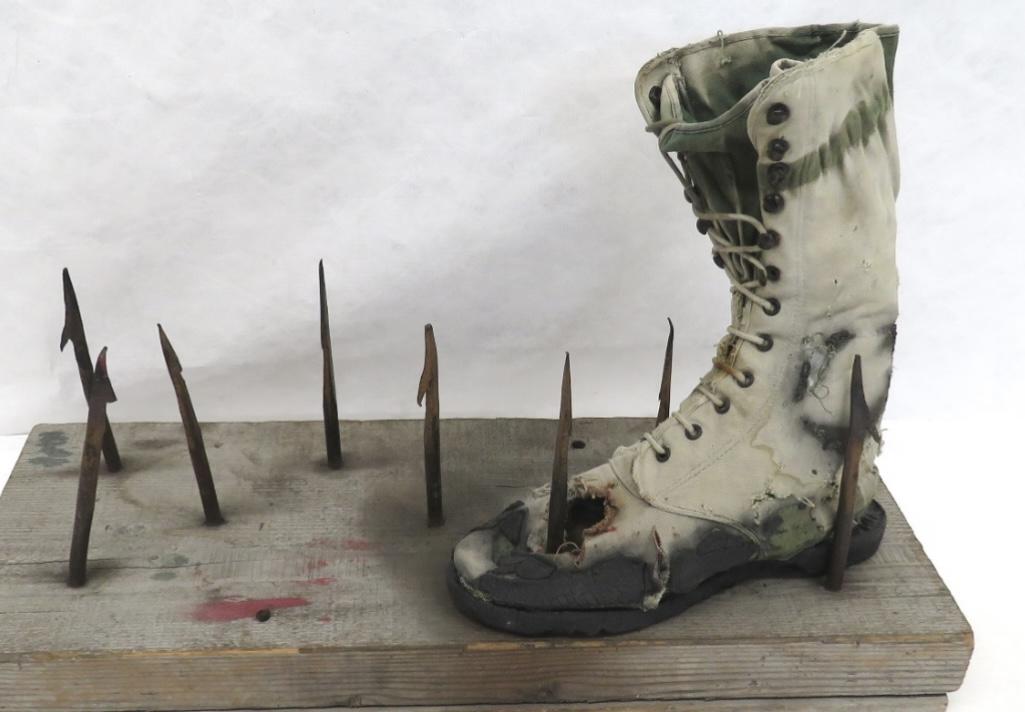
Vietnam Punji sticks
Punji sticks are among the most well-known and emblematic tools of guerrilla warfare used during the Vietnam War, representing both the ingenuity and the brutality of asymmetric conflict. These are sharpened wooden stakes, often made from bamboo, concealed in the ground or in foliage, and used as defensive or psychological weapons by the Viet Cong and other resistance fighters. Though simple in construction, their effectiveness was amplified by strategic placement and often by environmental or biological augmentation, turning the jungle itself into a weapon. Their use dates back centuries in Southeast Asian warfare but came into global awareness during the 20th century due to the intensity and coverage of the Vietnam War.
In form, punji sticks are typically carved to a sharp point and hardened over fire to increase durability and lethality. They are then planted upright in shallow pits, camouflaged with leaves or grass, or sometimes rigged to swing or fall when triggered by tripwires or pressure plates. In many cases, they were deliberately contaminated with feces, rotting food, or venomous plant juices, not necessarily to kill but to cause infections, injuries, and extended suffering—ultimately removing soldiers from combat for longer periods and draining enemy morale and medical resources. The psychological impact of punji sticks was profound, often instilling fear and caution among soldiers, slowing patrols, and disrupting movement through the dense jungles.
Punji sticks were never intended to be decisive weapons in themselves. Instead, they functioned as elements in a broader strategy of attrition and psychological warfare. For the Viet Cong, who faced a technologically superior enemy, punji sticks represented a low-cost, high-impact method of resistance. They required minimal materials and could be set up quickly by even small groups or individuals. What they lacked in firepower, they made up for in clever deployment—at choke points in trails, around encampments, in water-filled trenches, or near supply routes. Their purpose was not only to injure but to shape the battlefield, channeling or deterring movement, and creating a constant sense of danger.
The use of punji sticks can also be viewed as a reflection of the broader military doctrine of the Viet Cong and North Vietnamese forces. Rather than engage in direct, conventional battles, they relied heavily on guerrilla tactics: ambushes, sabotage, booby traps, and close-quarters surprise attacks. Within this doctrine, punji sticks played a vital supporting role, enhancing terrain denial and contributing to the sense that the jungle itself was hostile to foreign troops. They were part of a philosophy of warfare that emphasized adaptation, patience, and a deep understanding of both terrain and the psychology of the enemy. In some ways, punji sticks represent an organic technology—one that turns the natural environment into an active combatant.
Despite their primitive appearance, punji sticks posed real tactical challenges for U.S. and allied forces. Soldiers were trained to recognize and avoid traps, and specialized tools were developed to detect or neutralize hidden pits and booby traps. But the sheer variety of methods used to conceal punji traps meant that detection was never foolproof. Troops were often forced to proceed slowly, sweeping the jungle floor, probing the ground ahead of them, or following animal paths with extreme caution. These slowdowns not only impacted logistics but also increased the psychological stress on soldiers, who had to remain hyper-aware at all times, knowing that a single misstep could lead to serious injury.
In addition to foot traps, punji sticks were sometimes incorporated into more complex booby traps. Swinging log traps, collapsing walls, or spike-filled pits with triggering mechanisms added layers of danger and unpredictability. These innovations showcased the resourcefulness of fighters who had limited access to industrial weaponry. Even after the Vietnam War, similar techniques were employed in other conflicts, particularly in Southeast Asia, where dense terrain made conventional warfare less effective. The legacy of punji sticks continued to inform low-tech warfare well into the late 20th and early 21st centuries.
While punji sticks were effective tools of war, their use also raised ethical and humanitarian concerns. International conventions regarding warfare and the treatment of combatants view such traps as forms of indiscriminate or cruel weaponry. Because punji sticks often maim rather than kill, they have been criticized for causing unnecessary suffering. However, from the perspective of guerrilla fighters, the goal was not always to kill but to disorient, disable, and demoralize. These ethical questions are part of the broader discourse on irregular warfare and the choices made by those without access to conventional military power.
Today, punji sticks are primarily encountered in museums, documentaries, and historical analyses of the Vietnam War. They serve as powerful symbols of the conflict and of guerrilla tactics in general. Veterans often recount their encounters with punji traps with a mix of dread and grudging respect for the ingenuity they represent. In popular culture, the image of a soldier falling into a camouflaged pit of spikes has become an almost archetypal visual of jungle warfare. Yet, these images also serve as a reminder of the physical and psychological toll of the war, and the kinds of improvisation and desperation that defined it.
As modern warfare evolves, with the rise of drones, cyberattacks, and long-range precision weapons, the punji stick stands in stark contrast—a primitive yet powerful expression of asymmetrical combat. It illustrates how, even in an era of high technology, a simple piece of sharpened bamboo can be a formidable weapon when wielded with strategic insight and deep local knowledge. In studying punji sticks, we gain more than just technical knowledge of a trap; we confront the human dimensions of resistance, resourcefulness, and the thin line between survival and brutality in times of war.

